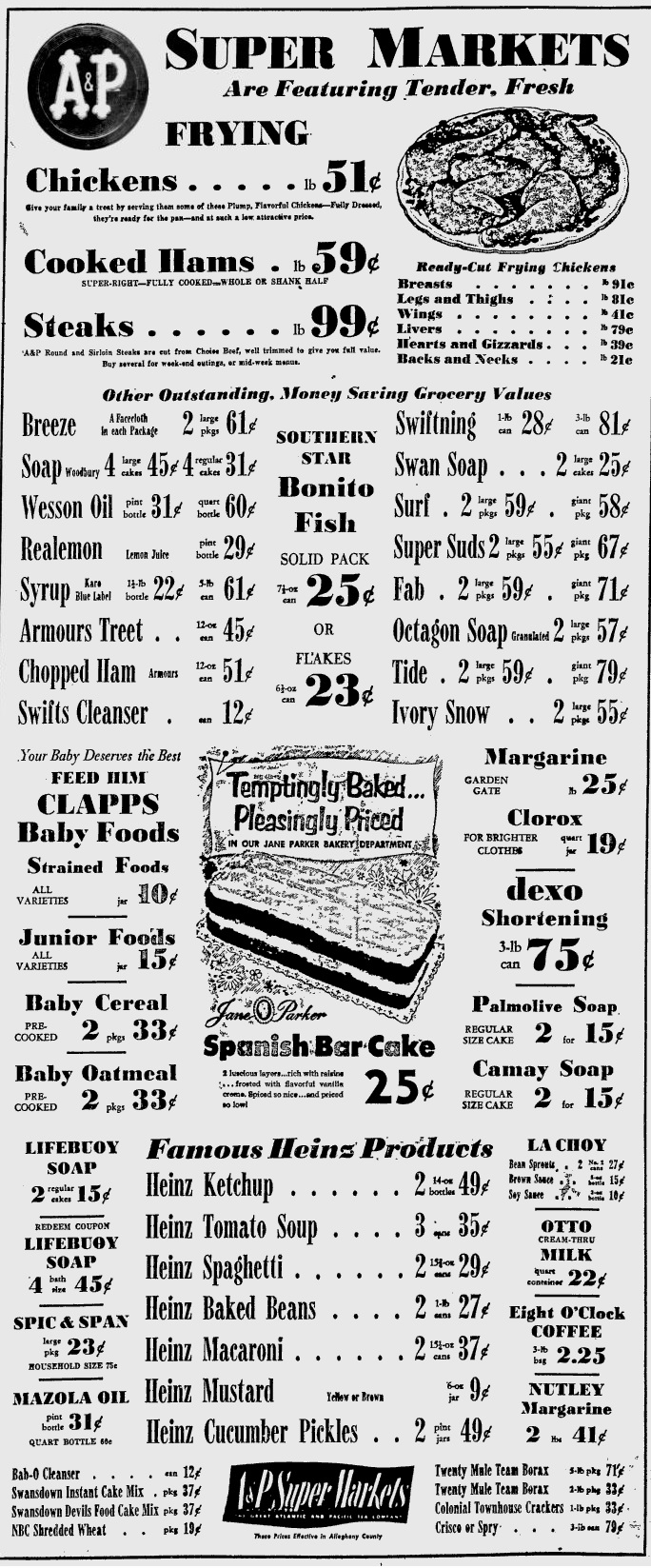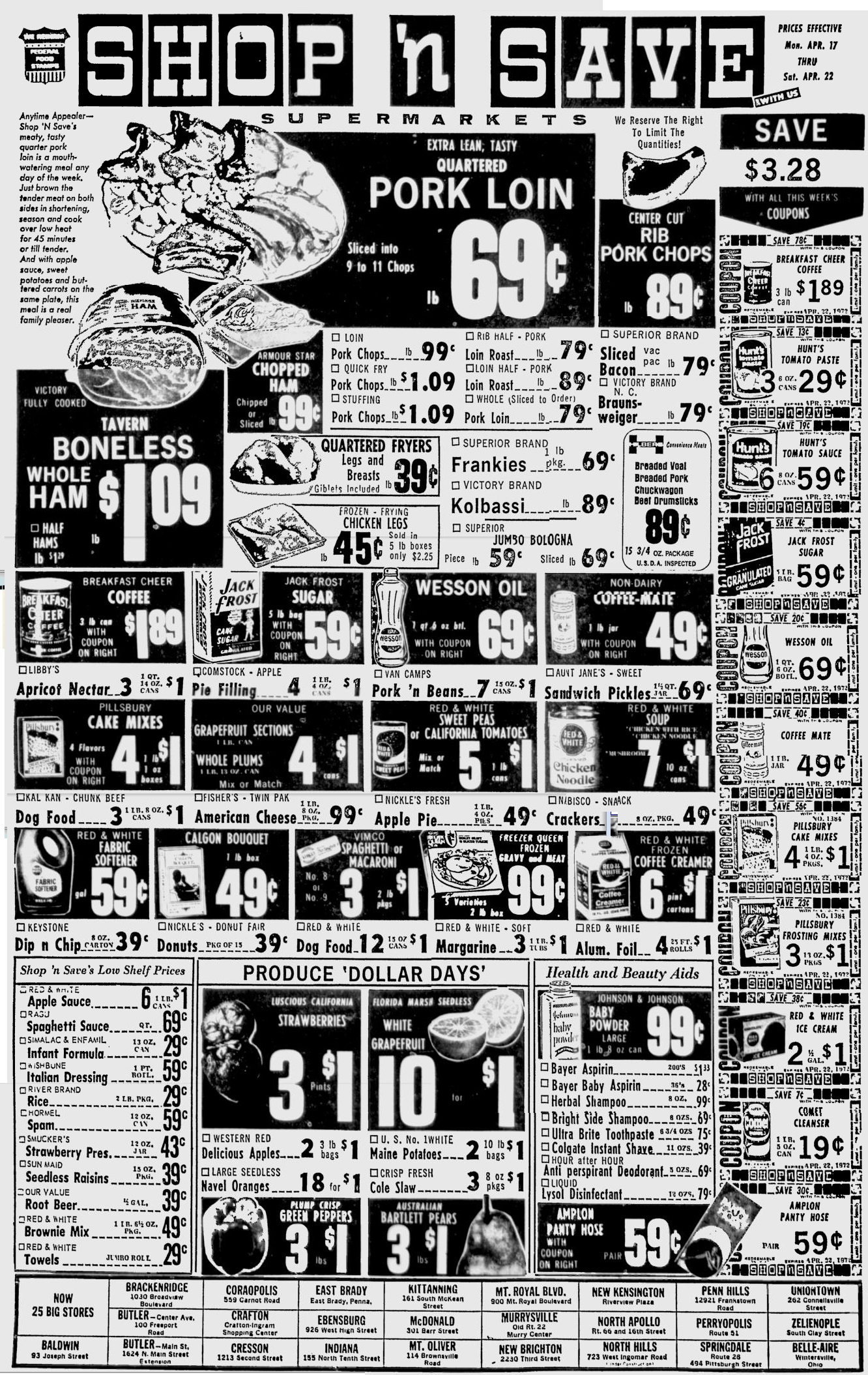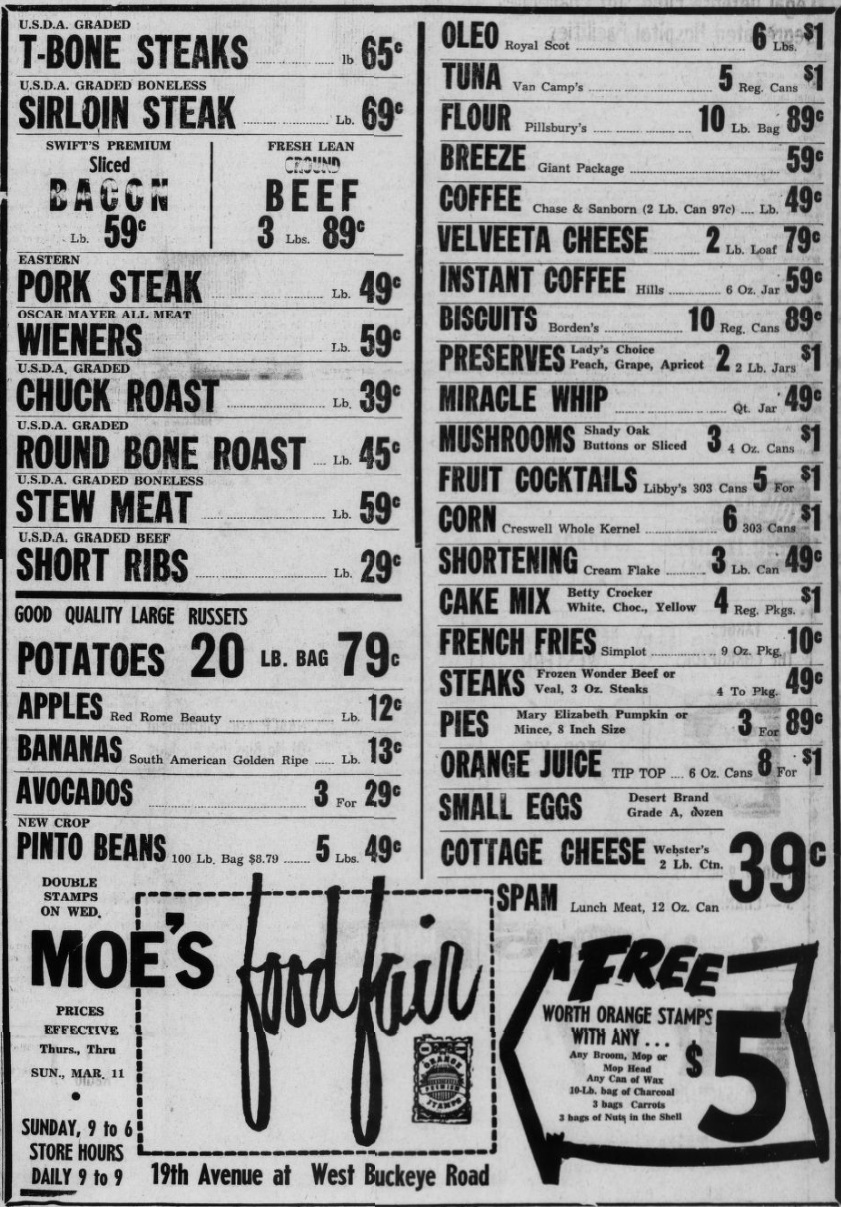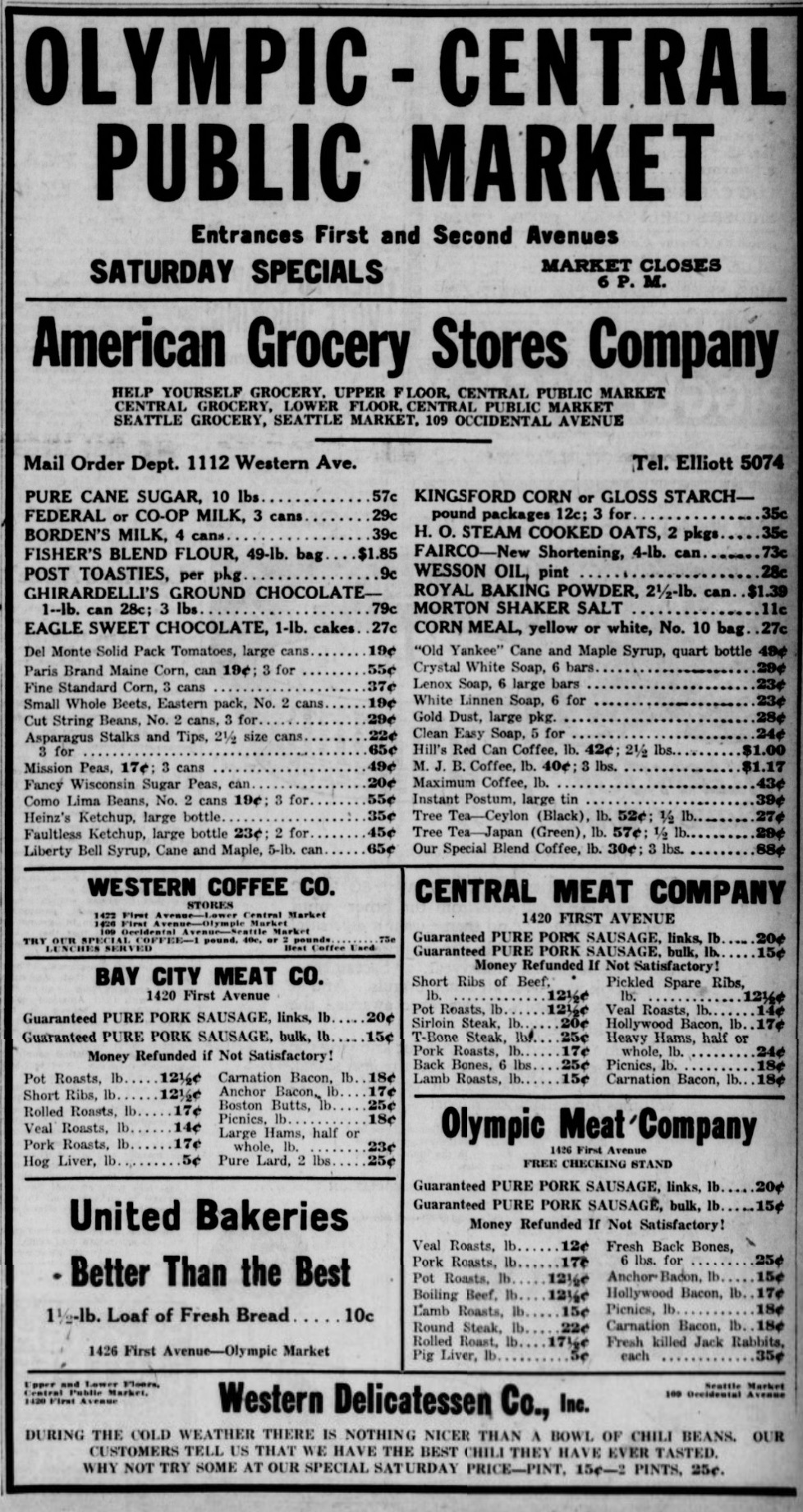
For a snapshot of grocery prices 85 years ago today, this ad appeared in the Pittsburgh Post Gazette on February 18, 1937. At first glance, the prices look like bargains, but the Great Depression was in full force, and for many, there wasn’t a lot of money to go around. According to this online inflation calculator, one dollar in 1937 was the equivalent of $19.36 today. For round numbers, let’s call it $20, so spending a nickel in 1937 would be about the same as spending a dollar today.
Some things were cheaper then. For example, for the ground beef, veal, or pork, you would need to hand over ten nickels, so the three pounds is the equivalent of about $10 today, or about $3.33 per pound. How does that compare to today’s price, which you can find on Amazon at this link.
On the other hand, three pounds of coffee for 75 cents sounds like a bargain until you realize that’s five nickels per pound, or the equivalent of $5 per pound today. To compare, you can find the current price at Amazon at this link.
Potatoes were a nickel a pound, meaning that they were the equivalent of a dollar a pound today. Eggs were three dozen for 89 cents. What would that be in today’s money, and how much would those same eggs cost today? You can find out at this Amazon link.
Surprisingly, duck was cheaper than chicken. Duck was 25 cents per pound, but chicken was 29 cents. If you don’t want to cook, you can eat in the store’s cafeteria. Lunch for two people was 54 cents, and a five-course dinner with table service was 75 cents each.
Some links on this site are affiliate links, meaning that this site earns a small commission if you make a purchase after clicking the link.
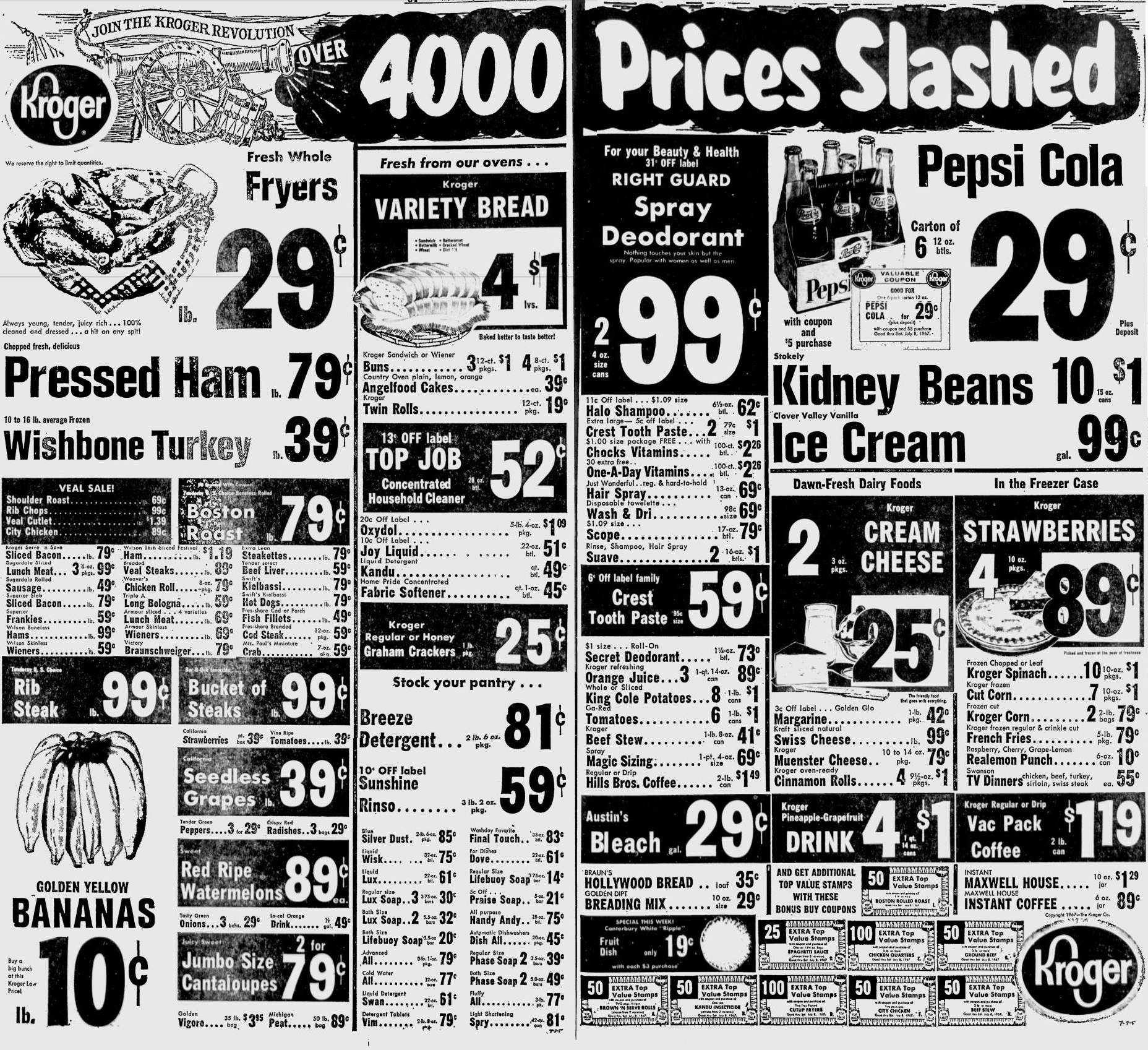 For a snapshot of grocery prices 55 years ago, this Kroger ad appeared in the Pittsburgh Press on July 5, 1967. The prices look very low, but there’s been a lot of inflation over the intervening years. According to this online inflation calculator, one dollar in 1967 was the equivalent of $8.75 in 2022 dollars. So the loaves of bread look like a bargain for a quarter, but that’s the same as $2.19 in today’s money. What would you have for dinner if you bought your groceries in 1967?
For a snapshot of grocery prices 55 years ago, this Kroger ad appeared in the Pittsburgh Press on July 5, 1967. The prices look very low, but there’s been a lot of inflation over the intervening years. According to this online inflation calculator, one dollar in 1967 was the equivalent of $8.75 in 2022 dollars. So the loaves of bread look like a bargain for a quarter, but that’s the same as $2.19 in today’s money. What would you have for dinner if you bought your groceries in 1967?
